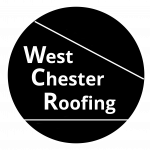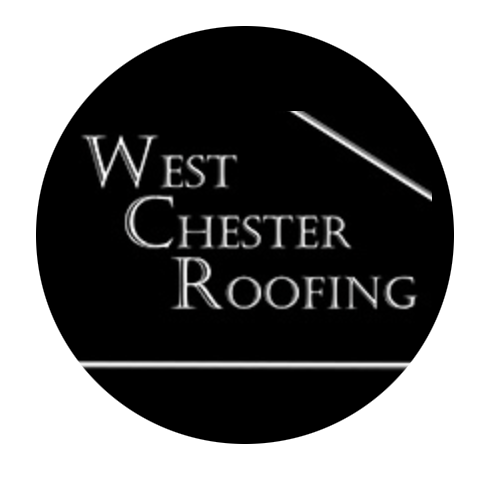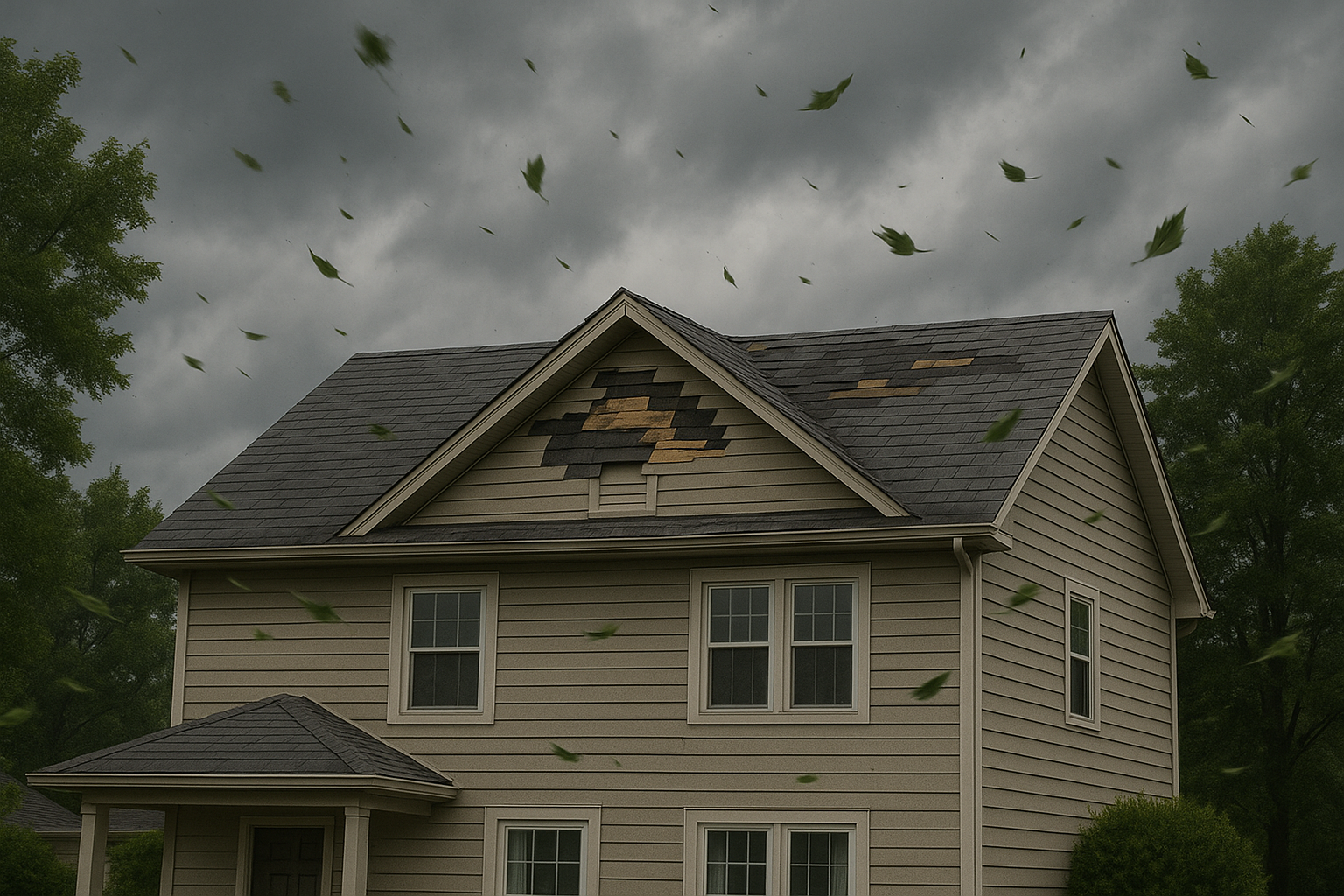Published by West Chester Roofing | June 2025
As another Ohio summer approaches, West Chester homeowners are preparing for the sweltering heat and humidity that defines our regional climate. But while you’re checking your air conditioning system and planning ways to stay cool, there’s one critical area of your home that you might be overlooking: your attic.
Poor attic ventilation doesn’t just make your home uncomfortable—it can cost you hundreds of dollars in increased energy bills, damage your roof, and even create dangerous health conditions. For West Chester residents dealing with Ohio’s extreme temperature swings and high humidity, understanding attic ventilation isn’t just helpful—it’s essential.
The Hidden Crisis Above Your Head
Walk into most West Chester attics on a 90°F summer day, and you’ll encounter a shocking reality: temperatures often soar between 130°F and 160°F. To put this in perspective, that’s hot enough to bake cookies. When your attic reaches these extreme temperatures, the heat doesn’t just stay there—it radiates down through your ceiling, forcing your air conditioning system to work overtime.
The result? Energy bills that can increase by up to 25% during peak summer months.
But the problems don’t stop at your monthly utility bill. West Chester’s climate presents unique challenges that make proper attic ventilation even more critical than in many other regions.
Why West Chester’s Climate Makes Ventilation Essential
West Chester sits in southwestern Ohio, where we experience what meteorologists call a “continental humid subtropical” climate. This means:
- Hot, humid summers with temperatures regularly reaching the upper 80s and 90s
- High humidity levels often exceeding 60-70% during summer months
- Extreme temperature fluctuations that can stress building materials
- Sudden storm systems that bring intense heat followed by rapid cooling
This combination creates the perfect storm for attic problems. During the day, intense solar heating turns your attic into an oven. At night, when temperatures drop and humidity rises, that superheated space becomes a breeding ground for moisture problems.
The Science Behind Attic Heat Buildup
Understanding why your attic gets so hot requires a basic grasp of building science. When the sun beats down on your roof, it transfers heat through your shingles and roof deck into the attic space. Without proper ventilation, this heat has nowhere to go.
Here’s what happens in an improperly ventilated West Chester attic:
- Solar heat gain: Dark asphalt shingles (common in West Chester) can reach surface temperatures of 160°F or higher
- Heat transfer: This heat moves through the roof deck into the attic space
- Heat accumulation: Without airflow, temperatures build throughout the day
- Radiant heat transfer: The hot attic radiates heat down through insulation into your living space
The result is an attic that can be 40-70 degrees hotter than the outside temperature—and a living space that feels uncomfortably warm despite your air conditioning running constantly.
The Real Cost of Poor Attic Ventilation
Energy Costs That Will Shock You
When your attic temperature soars, your HVAC system faces an uphill battle. Consider this scenario common in West Chester:
- Outside temperature: 92°F (typical July afternoon)
- Properly ventilated attic: 105-110°F
- Poorly ventilated attic: 145-150°F
That 40-degree difference means your air conditioning system must overcome not just the outdoor heat, but also the heat radiating down from your attic. For a typical 2,200 square foot West Chester home (the local average), this can translate to:
- 25% higher cooling costs during summer months
- $200-400 additional on summer energy bills
- Shortened HVAC lifespan due to overwork
- Uneven cooling with upper floors significantly warmer
Roof Damage That Threatens Your Investment
With West Chester’s median home value at $442,795, protecting your roofing investment is crucial. Poor ventilation creates several threats to your roof system:
Shingle Deterioration: Extreme attic heat causes asphalt shingles to age prematurely. Shingles designed to last 20-25 years may need replacement in 15-18 years when exposed to consistently high temperatures.
Structural Stress: The expansion and contraction caused by extreme temperature swings can stress roof framing and connections. This is particularly problematic in West Chester, where we experience temperature variations of 30-40 degrees between day and night during summer.
Ice Dam Risk: While it might seem counterintuitive to worry about ice in summer, poor ventilation that causes winter heat buildup leads to ice dams—a common and expensive problem for West Chester homeowners.
Health and Safety Concerns
Perhaps most importantly, poor attic ventilation can create serious health and safety issues:
Mold Growth: Ohio’s high humidity combined with hot attic temperatures creates ideal conditions for mold growth. Once established, mold can spread throughout your home’s ventilation system.
Indoor Air Quality: A superheated attic can affect air pressure throughout your home, potentially drawing contaminants into your living space.
Electrical Hazards: Extreme heat can stress electrical wiring in your attic, increasing fire risk.
Understanding Proper Attic Ventilation
Effective attic ventilation isn’t about having a few vents—it’s about creating a balanced system that promotes continuous airflow. The best systems follow the principle of passive ventilation, using natural physics to move air.
The Two-Part System
Intake Vents (Soffit Vents): Located under the eaves of your roof, these vents allow cool outside air to enter the attic at the lowest point.
Exhaust Vents (Ridge Vents): Positioned at the peak of your roof, these vents allow hot air to escape at the highest point.
This creates a natural convection current: cool air enters through the soffit vents, travels up under the roof deck (removing heat), and exits through the ridge vents.
Ventilation Requirements for West Chester Homes
Ohio building codes require specific ventilation ratios based on your attic square footage:
- Standard requirement: 1 square foot of net free vent area for every 300 square feet of attic space
- Enhanced requirement: 1 square foot of net free vent area for every 150 square feet if ventilation is unbalanced
For a typical West Chester home with 1,800 square feet of attic space, this means:
- 6 square feet of total ventilation area (with balanced intake/exhaust)
- Split evenly: 3 square feet of intake vents and 3 square feet of exhaust vents
Common Ventilation Mistakes in West Chester Homes
During our inspections of West Chester homes, we frequently encounter these ventilation problems:
Mixed Exhaust Systems: Homes with both ridge vents and gable vents, which can short-circuit airflow and reduce efficiency.
Blocked Soffit Vents: Insulation covering intake vents, preventing air from entering the attic.
Insufficient Intake: Plenty of exhaust vents but inadequate intake, creating negative pressure that can pull conditioned air from your home.
Painted-Over Vents: Previous painting projects that have blocked ventilation openings.
Solutions for West Chester Homeowners
Assessment: Is Your Attic Properly Ventilated?
Before implementing solutions, you need to understand your current situation. Here are warning signs of poor attic ventilation:
Temperature Signs:
- Attic temperatures consistently 30+ degrees above outside temperature
- Upper floors that are difficult to cool
- HVAC system running constantly during hot days
Visual Signs:
- Rust on metal components in the attic
- Water stains or moisture in the attic
- Deteriorating or curling shingles
- Ice dams in winter
Energy Signs:
- Unexplained spikes in summer cooling costs
- Uneven temperatures between floors
- HVAC system cycling frequently
Professional Solutions
Ridge Vent Installation: The gold standard for attic exhaust, ridge vents provide continuous ventilation along the entire roof peak. When properly installed with adequate soffit intake, ridge vents can reduce attic temperatures by 30-50 degrees.
Soffit Vent Enhancement: Many West Chester homes have insufficient or blocked intake vents. Professional installation of continuous soffit vents ensures adequate air intake.
Powered Ventilation: In extreme cases, powered exhaust fans can supplement natural ventilation. Solar-powered options are particularly effective, as they work hardest when cooling is needed most.
Radiant Barriers: Reflective insulation installed on the underside of the roof deck can reduce radiant heat transfer by up to 40%, keeping attic temperatures lower.
DIY Maintenance Steps
While major ventilation improvements require professional installation, homeowners can take several maintenance steps:
Clear Blocked Vents: Remove insulation or debris blocking soffit vents. This simple step can dramatically improve airflow.
Trim Vegetation: Ensure trees and shrubs aren’t blocking roof vents or preventing airflow around your home’s eaves.
Seal Air Leaks: Use weatherstripping or caulk to seal gaps around attic access doors and penetrations.
Monitor Conditions: Use a simple thermometer to track attic temperatures and humidity levels.
Seasonal Strategies for West Chester Homeowners
Spring Preparation (March-May)
- Inspect vents for winter damage or blockages
- Clean gutters to ensure proper water drainage
- Check attic insulation for settling or damage
- Test attic fans if you have powered ventilation
Summer Monitoring (June-August)
- Track energy bills for unexplained increases
- Monitor attic temperatures during peak heat
- Watch for signs of HVAC stress or uneven cooling
- Inspect shingles for heat damage or aging
Fall Maintenance (September-November)
- Clear debris from vents and gutters
- Inspect for summer damage from extreme heat
- Prepare for winter by ensuring proper air sealing
- Plan improvements for the off-season
Winter Vigilance (December-February)
- Watch for ice dams, which indicate ventilation problems
- Monitor attic moisture levels
- Plan spring improvements while contractors have availability
- Document issues for insurance claims if needed
When to Call West Chester Roofing Professionals
While some maintenance tasks are DIY-friendly, proper attic ventilation requires professional expertise. Consider calling professionals when:
- Attic temperatures consistently exceed outside temperatures by more than 30 degrees
- Energy bills have increased significantly without explanation
- HVAC systems are struggling to maintain comfort
- Visible damage appears on shingles or roof structure
- Moisture or mold is present in the attic
What to Expect from Professional Assessment
A qualified West Chester roofing contractor should provide:
Comprehensive Inspection: Evaluation of existing ventilation, insulation, and air sealing.
Temperature Monitoring: Professional-grade measurement of attic conditions.
Airflow Analysis: Assessment of ventilation balance and efficiency.
Customized Solutions: Recommendations specific to your home’s design and West Chester’s climate.
Energy Impact Projections: Estimates of potential energy savings and payback periods.
The Investment That Pays for Itself
Proper attic ventilation represents one of the best home improvement investments for West Chester homeowners. Consider these typical returns:
Financial Benefits
Energy Savings: 15-25% reduction in summer cooling costs HVAC Longevity: 3-5 years additional system life Roof Protection: 20-30% longer shingle life Home Value: Improved efficiency and comfort appeal to buyers
Comfort Benefits
Even Temperatures: Elimination of hot spots and uneven cooling Improved Air Quality: Better circulation and moisture control Reduced Noise: Proper ventilation can reduce HVAC cycling noise Peace of Mind: Protection against expensive damage
Long-term Protection
Storm Resilience: Better ventilation improves wind resistance Winter Protection: Prevention of ice dams and moisture problems Structural Integrity: Reduced stress on roof components Insurance Benefits: Proper ventilation may qualify for discounts
Making the Right Choice for Your West Chester Home
Every home is unique, and West Chester’s diverse housing stock—from historic properties to modern developments—requires customized ventilation solutions. Factors that influence the best approach include:
Home Age: Older homes may need comprehensive upgrades, while newer homes might need fine-tuning.
Roof Design: Complex rooflines require carefully planned ventilation strategies.
Existing Systems: Integration with current HVAC and ventilation systems.
Budget Considerations: Phased improvements that provide immediate benefits while building toward comprehensive solutions.
Taking Action Before the Heat Hits
West Chester’s summer heat is inevitable, but suffering through poor attic ventilation isn’t. Whether your home was built in the post-war boom of the 1950s or constructed in one of West Chester’s newer developments, proper attic ventilation can dramatically improve your comfort, reduce your energy costs, and protect your investment.
The best time to address ventilation problems is before the mercury rises and your air conditioning system begins its summer-long battle against physics. By taking action now, you can ensure that your home stays comfortable, your energy bills stay manageable, and your roof stays protected through another challenging Ohio summer.
Don’t let another summer of high energy bills and uncomfortable living spaces pass by. Your attic holds the key to a cooler, more efficient home—and with West Chester’s climate challenges, proper ventilation isn’t just a luxury, it’s a necessity.
Ready to beat the heat this summer? Contact West Chester Roofing for a comprehensive attic ventilation assessment. Our local experts understand Ohio’s unique climate challenges and can design a ventilation solution that keeps your home comfortable and your energy bills under control. Call us today for your free consultation and take the first step toward a cooler, more efficient home.


